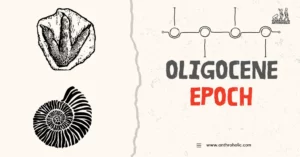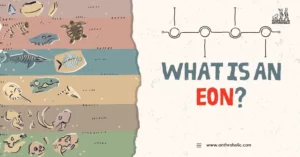AI Answer Evaluation Platform Live Now. Try Free Answer Evaluation Now
Cultural Resource Management
Fundamentally, cultural resource management is a process that gives attention to the protection and management of the many but sparsely distributed components of cultural heritage in a modern world with a growing population and changing needs. Cultural Resource Management, which is sometimes compared to archaeology, should and does incorporate a variety of property kinds, including: “cultural landscapes, archaeological locations, historical documents, social structures, expressive cultures, antebellum structures, religious beliefs and practices, industrial legacies, folklife, artifacts, rite spiritual places.”

Cultural Resource Management Trajectory
In the middle of the 1970s, the idea of cultural resource management (CRM) emerged, putting an end to the worries of archaeologists and folklorists about the destruction of historical sites and archaeological artifacts and opening the door to exploring the dimensions of intangible variables.
How can cultural resources be located for management?
Through his travels, which were made essential by his involvement in missionary and commercial endeavors, the modern man got acquainted with artifacts from all parts of the world. He collected strange artifacts with the intention of beautifying his living room or drawing room, and on occasion he did so in order to show them to academics. There was a great demand for old artifacts from the New World during the European Renaissance.
Antiquities were stolen and smuggled to meet the demand created by the overwhelming interest in and desire for these artifacts. In the beginning, man merely acquired items of cultural and antiquarian worth out of curiosity, but as time went on, people realized how important it was to preserve these items since they showed what their predecessors had done. This subsequently evolved into a planned effort known as exploration, which was followed by excavation, the process of unearthing the past. Criminals and thugs have been plundering regions with a lot of antiquity for centuries in search of hidden or buried treasure.
In 1873, Heinrich Schliemann, a German businessman, discovered seven or eight sites in Greece, including Troy, the mythological city of Homer. A rich businessman in St. Petersburg, Russia, hired 150 laborers to start the first excavation in search of the city of Troy close to Hissarlik. Due to the haphazard nature of his labor, Schliemann destroyed more evidence than he discovered. He also demolished the higher strata because he was interested in the large gold jewels that his Greek wife wore around her neck, which are now considered “unethical.”
Fox Following this, Pitt-Rivers developed an organized method combining historical tradition with scientific investigation. When Augustus H. Lane Fox, a military general, left the service in 1880, he changed his name to Augustus H. Lane Fox Pitt-Rivers and was awarded the Rivers Estate in southern England. Finally, he rose to fame as Pitt-Rivers, the man who invented the intricate and painstaking excavation techniques used by archaeologists today. One of his contemporaries, Flinders Petrie, made significant contributions to the advancement of archaeological methodology. Excavation is undeniably referred to as destruction, yet what is recovered serves as the cornerstone for re-creating a location’s cultural history. The excavation that we can see now has been further altered from the previous work by a number of individuals, namely Cultural resource management and academic research in archaeology appear to be at odds with one another in any project that is managed, controlled, and carried out by government agencies, in contrast to developed nations that have a procedure for awarding a contract of preservation to an archaeological survey or any authorized agency. In these situations, contracting organizations see archaeology as an inductive science that adheres to the normative approach. The normative viewpoint assigns to culture a descriptive technique that may be utilized to describe culture throughout time or within one specific time period. Archaeologists believe that the surviving artifacts, such as potsherds, are manifestations of human activity over a long period of time due to their style, form, and alterations. Global archaeology has benefited from the useful organizing method of culture-historical reconstruction, which has helped to bring some descriptive order to the field. When doing a broad exploratory investigation throughout a number of wide survey locations, the inductive technique is advantageous. When archaeologists began to view fieldwork and excavation operations (or exploration and excavation) as problems aimed at validating hypotheses, the usefulness of deductive research in archaeology increased in the 1970s.
Design of research for the management of cultural resources
A fundamental need of legacy management, or the management of cultural resources, is the formulation of a research design. It is necessary to define the project’s strategy and provide a nomenclature for the proposed research. The next phase involves gathering data, analyzing it, and ultimately creating an analytical report. Following the report submission, conservation and preservation of the same may occur. It is necessary to act quickly when an area is in immediate danger or when a community has been selected for a project. A senior archaeologist who collaborates with experts in adjacent subjects is the ideal candidate to lead a Cultural Resource Management project. However, large-scale projects could call for a lot of laborers, and in such cases, new recruits would also need to be trained.
Despite their inert character, they are the ideal objects to convey the dynamic cultural advancement of mankind in the past, using the example of the “National Museum of Danish Antiquities,” investigations conducted at a museum may provide significant and pertinent information on certain facets of human cultural history.
Conclusion
Cultural resource studies in relation to cultural heritage help people understand their history and reveal the type of culture that the locals of an area once practiced. Therefore, the government of a country continuously works on the preservation of the archaeological sites, both independently and with the assistance of educational and research institutes and qualified learning organizations. Every government in the world, including that of India, has different types of rules and regulations in this area and also implements state legislation for the preservation of cultural resources in each state.




